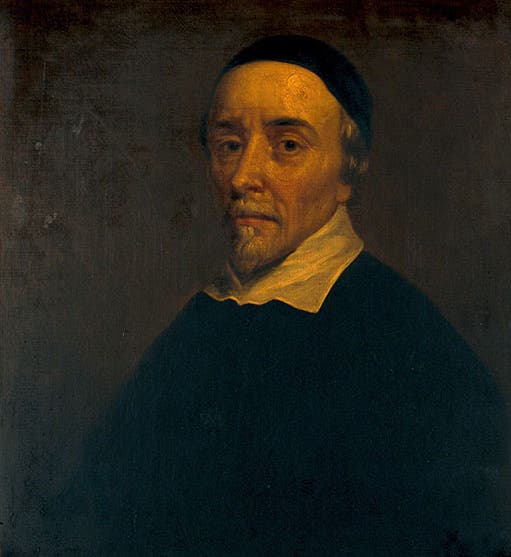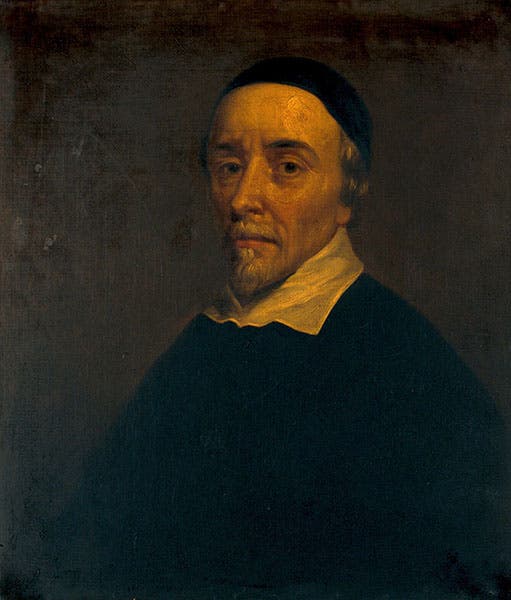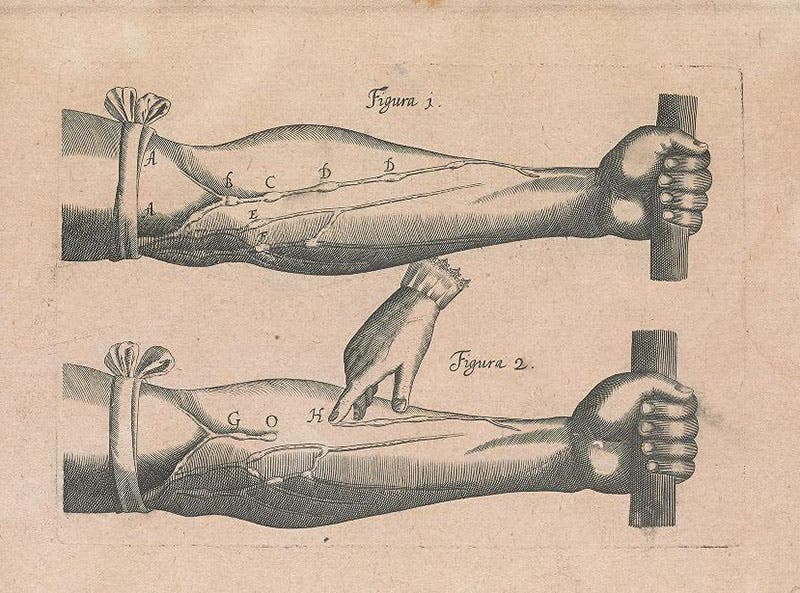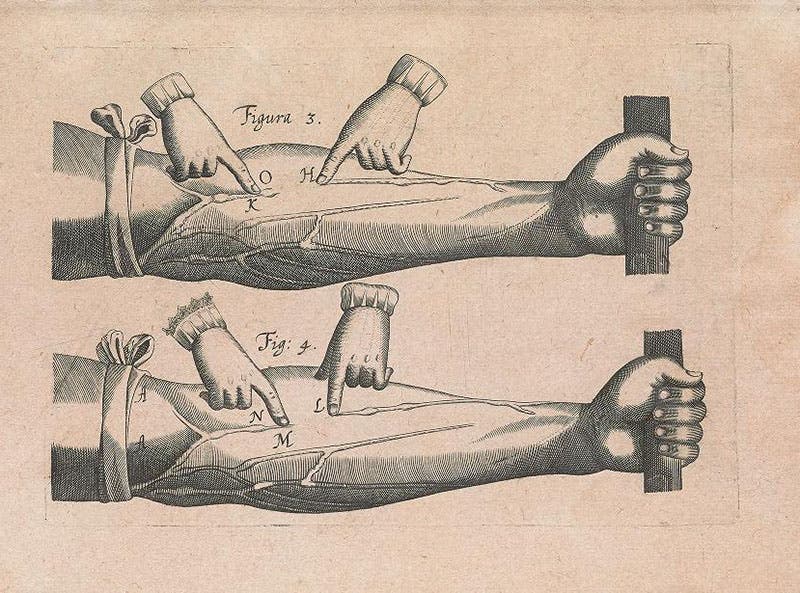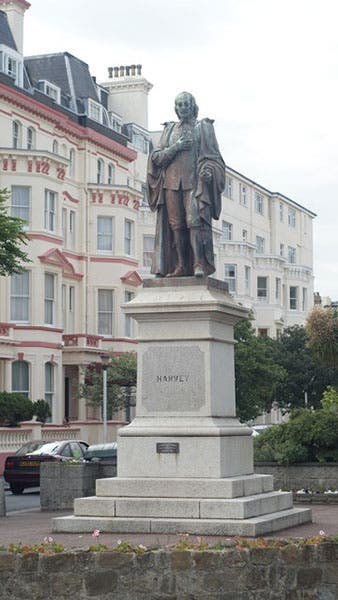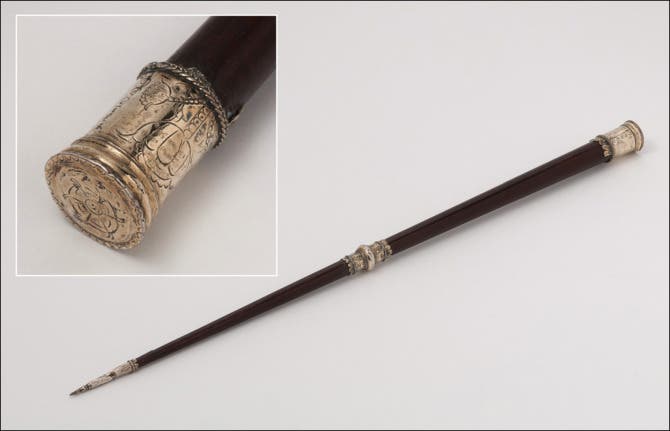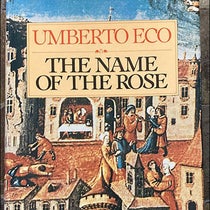Scientist of the Day - William Harvey
William Harvey, an English physician, died on June 3, 1657, at the age of 79. Because he was born on April 1, his birthday never gets celebrated in these parts, as we are engaged in more frivolous pursuits on that day, and it is high time we corrected that omission, as Harvey made perhaps the single greatest contribution ever to our understanding of human physiology.
Harvey was born in Folkestone, Kent, studied at Caius College, Cambridge, and then attended the University of Padua, where the great Vesalius had once taught, receiving his medical degree in 1602. His immediate teacher was Girolamo Fabrici d'Acquapendente, who was working on a study of the valves in the veins while Harvey was there. Harvey then returned to England, joined the Royal College of Physicians, and gradually moved up the pecking order, obtaining a position as physician at St. Batholomew's Hospital in London in 1609, becoming the Lumleian Lecturer at the College of Physicians in 1615, and physician extraordinary to King James I in 1618, later serving King Charles I as well. He also had a private practice of wealthy and distinguished patients, which was an important source of income.
The Lumley lectureship was an interesting endowment, as the lectures were anatomical in nature, and anatomy was more the province of the surgeon than the physician. It was probably while preparing these lectures, in the period between 1615 and 1628, that Harvey got interested in the heart and the system of vessels – arteries and veins – associated with it. In 1615, it was generally understood that the liver was the origin of the venous system and the source of the dark venous blood. When the blood got to the right side of the heart, it was infused with spirit from the air via the lungs, percolated through the wall of the heart into the left ventricle, acquired its bright red color, and was distributed through the arteries to the rest of the body. Venous blood was for nourishment and growth and was turned into tissue; arterial blood was responsible for the vital functions of the body, such as breathing and digestion. The venous and arterial systems were distinct and did not connect; they were not considered part of a circulatory system, because the blood was not thought to circulate.
Harvey noted many oddities that others had noticed as well, but they made a different impression on Harvey. The arteries are much thicker and sturdier than the veins, and they pulsate. The vein from the liver to the heart is bigger at the heart than at the liver, although it was supposed to originate in the liver. The artery from the heart to the lungs is much more like a vein than an artery, and the pulmonary vein is more like an artery. Both are much bigger and sturdier than need be to nourish the lungs. The valves in the veins, which his teacher Fabricius thought were to slow down the blood as it moves out through the veins and keep it from pooling in the lower limbs, were instead one-way valves that allowed the blood to flow only toward the heart, not away from it.
Harvey’s crucial realization – that the blood moves out through the arteries and back to the heart through the veins, and thus circulates – came when he decided to try to quantify blood flow. He measured how much blood was pumped out of the left ventricle with every pulse, a mere fraction of an ounce or so, but when he calculated how much blood was pumped out of the heart in half an hour, it was a quantity far greater than the total amount of blood in the body. The blood pumped out must be coming back, to be pumped out again and again, in a true system of circulation.
In 1628, Harvey published Exercitatio anatomica de motu cordis et sanguinis in animalibus (Anatomical Exercise on the Motion of the Heart and Blood in Animals), usually referred to as De motu cordis, in which he made the case for blood circulation. He did so without being able to empirically demonstrate any connections between the arteries and veins, requiring that he hypothetically assume the existence of capillaries. The book is not long, just over 70 pages, and has only one plate (usually cut into two engravings in most copies), which is a sequence of four figures, showing an arm with veins swollen by a tourniquet, demonstrating that the valves prevent blood from moving away from the heart and allow the venous blood to move only toward the heart (third and fourth images). Harvey had the book printed in Frankfurt – it is said that he was impressed by the printing job that Robert Fludd's opera had received in Frankfurt – but that was a mistake with long-term consequences, as German printers in the first third of the 17th century were plagued with lots of bad (acidic) paper, and many copies of De motu cordis are today in terrible condition, with heavily browned and brittle paper. We would, however, gladly take one of those lousy copies, since we do not have a first edition of Harvey’s book. De motu cordis is one of the priciest of all the milestone books in the history of science, since physicians – with considerable buying power – have been collecting copies since the 18th century, with price as no object. The copy we show here was owned by Bern Dibner and is now in the Smithsonian Libraries in Washington, D.C.
The reception of Harvey’s theory of blood circulation is a separate story, one we might consider in a second post. We conclude instead with a photo of an object now kept in the archives of the Royal College of Physicians in London. It is a whalebone-and-silver pointer that belonged to Harvey and which he used in his anatomical demonstrations. Many years ago, I wrote an email series called “100 Objects of Science,” four a week for 25 weeks, featuring such things as Galileo’s telescope and Franklin’s glass harmonica, and our 86th entry was a pair of whalebone objects, Harvey’s pointer and Charles Darwin’s walking stick. I always liked the juxtaposition of those two handsome artifacts.
An excellent introduction to Harvey is provided by William Harvey and the Mechanics of the Heart, by Jole Shackelford (Oxford, 2003), a book supposedly written for high-school students, but because Shackelford is a superb historian of science, the book manages to be clear, accurate, and insightful at the same time, a triad of traits not often found together.
William B. Ashworth, Jr., Consultant for the History of Science, Linda Hall Library and Associate Professor emeritus, Department of History, University of Missouri-Kansas City. Comments or corrections are welcome; please direct to ashworthw@umkc.edu.

